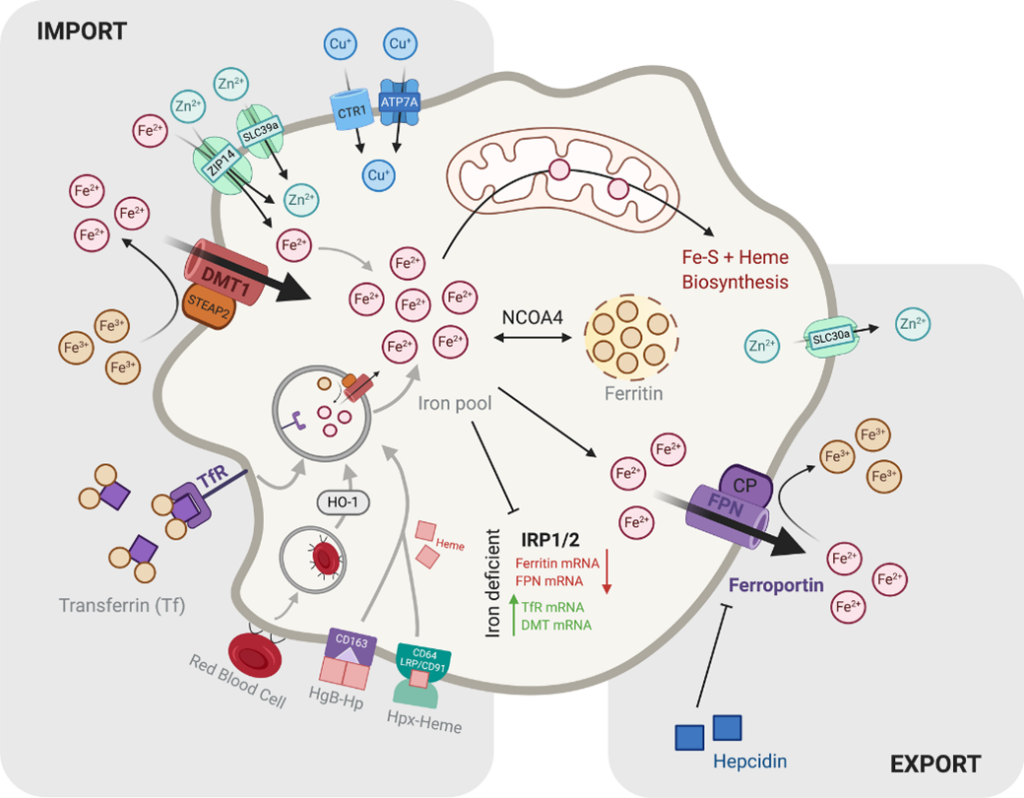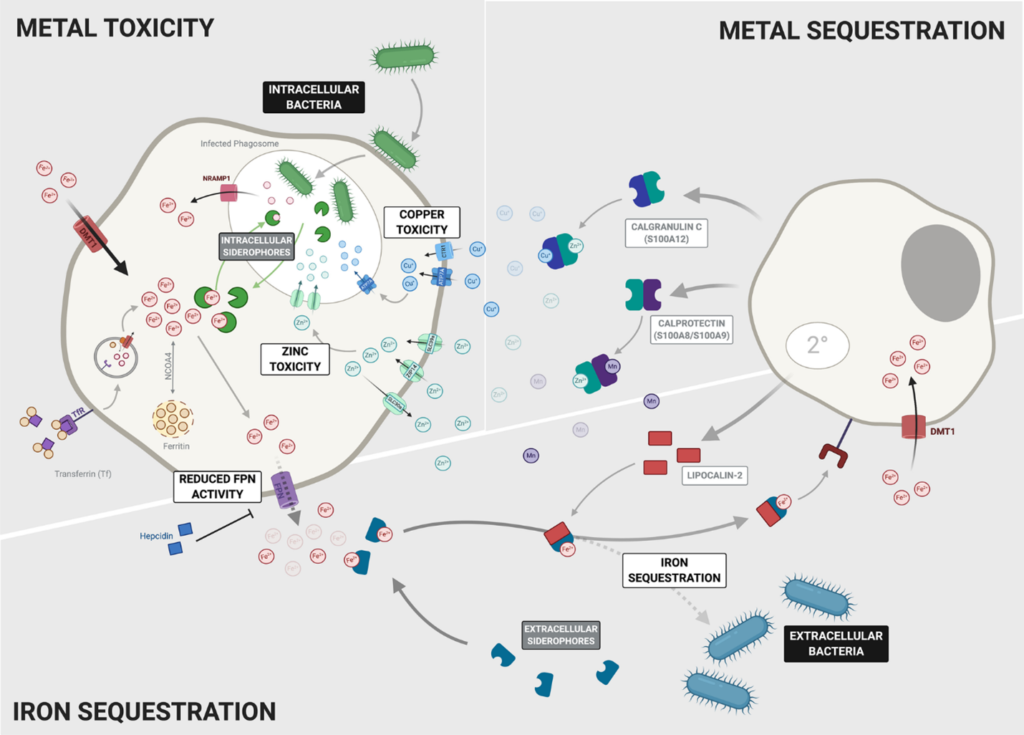The immune system is a complex network of cells, tissues, organs that work together to protect the body against bacteria, viruses, fungus, cancer cells and many other pathogens or external agents with the capacity to cause damage to the body. One of the first lines of defense for this complex system are macrophages. They are specialized cells that detect, phagocyte and kill any harmful pathogen invading the body. They accomplished this by devouring the invader microorganism and using a diverse range of strategies, they destroyed the invader inside them (1). Here is where metals come to play; one of the macrophages strategies to destroy pathogens is using the redox potential of metal ions to create a cytotoxic environment, toxic enough to kill the pathogen.
Metals like Zn, Fe, Co, Mn, etc. are essential trace metals for organisms but can be toxic in excess. That’s why pathogens have developed strategies to sequester metals needed for proper development, and why the immune system has weaponized this need against invaders. Pathogens are not defenseless against this strategy, so an arms race has been taking place between macrophages and pathogens for these resources (2).
Nutritional immunity, the name of this defense mechanism by which macrophages realize receive, is the sequestration of the metals to limit pathogenicity and destroy the pathogen. This is possible due to the need also of macrophages for these metals; let’s not forget that macrophages are cells and like all cells need metals for proper development (fig. 1) (3).

The strategy for metal sequestration depends on the type of pathogen the immune system is trying to get rid of. We can divide pathogens into 2 categories: intracellular and extracellular. The first ones are characterized for needing to be inside the host cell to continue their infectious cycle; while the extracellular don’t need this, they can do it outside the cell (some can use both strategies). Macrophages devour the intracellular pathogens and create a toxic microenvironment in the vesicles created when devouring pathogens, using the metals available inside the macrophages. Pathogens try to fight these by attempting to use the metals faster than the macrophage can use it to create a toxic environment. There are several strategies the macrophages used to achieve this, for example: they stop exporting metals to the outside of the cell by decreasing the expression of metal transporters and increasing the expression of importers to bring more metals into the macrophage. Here in Figure 2, we show some of the strategies mainly for iron, the metal that’s been researched the most, and other examples with other metals (fig. 2)

Fig. 2 Metal sequestration as an immune response to bacterial infection. Metals can be used to create a toxic environment for bacteria or sequestrate the metals to inhibit bacterial development and therefore bacterial infection capabilities (3).
In metal sequestration, it can be observed a battle to obtain the metals from the extracellular space of the organism. This battle is fought by producing proteins that sequestrate this metal from the organism by the pathogen, called siderophores. After this, macrophages express proteins to sequestrate the proteins produced by the pathogens with the sequestrated metals.
Metals are essential for organisms and the proper regulations are needed for an effective immune response. It’s important for the pathogen and as much important for the macrophages. The disruption in these mechanisms could be a sign that the immune system is not achieving its function properly. There is still a lot to learn about the complex relationship between metals and the immune system, but it could open a new line of investigation in the search for novel therapies against diseases and strategies on how to strengthen the immune system response (3).
This article was written by Jaime Carrazco-Carrillo. Contact info: jcarrazcoca@wesleyan.edu.
Citations:
- National Institute of Allergies and Infectious Diseases (NIAID). Overview of the Immune System. December 30, 2013. https://www.niaid.nih.gov/research/immune-system-overview.
- Monteith AJ, Skaar EP. The impact of metal availability on immune function during infection. Trends Endocrinol Metab. 2021 Nov;32(11):916-928. doi: 10.1016/j.tem.2021.08.004. Epub 2021 Sep 3. PMID: 34483037; PMCID: PMC8516721.
- Healy, C., Munoz-Wolf, N., Strydom, J. et al. Nutritional immunity: the impact of metals on lung immune cells and the airway microbiome during chronic respiratory disease. Respir Res 22, 133 (2021). https://doi.org/10.1186/s12931-021-01722-y.


